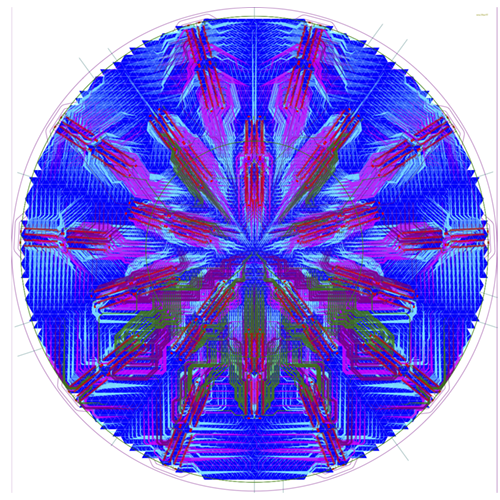New review article on Low Energy Nuclear Physics with Active Targets and Time Projection Chambers
A collaboration of researchers from Michigan State University, the University of Notre Dame, and the Lawrence Berkeley National Laboratory published a review in Progress in Particle and Nuclear Physics of current and future topics in low energy nuclear physics that will benefit from advances in active-target experiments.
The trick of an active target is that the target gas also serves as the detector medium. This leads to a boost in luminosity for reaction measurements where a low-energy recoil provides the main kinematical information and for which a traditional solid target of equivalent thickness would not preserve the resolution. This aspect is crucial, for instance, in experiments using rare-isotope beams impinging on target/detector gases such as proton, deuteron, or alpha. Most active-target designs are based on Time-Projection-Chamber technology, where the reaction vertex and the tracks of the reaction residues are detected and imaged in three dimensions. This concept is especially well suited for exploring the properties of low-intensity rare isotopes by imaging the reactions they undergo in such an active target time-projection chamber.
Thanks to these exciting opportunities, active targets have become popular across the world and highlights obtained from the various designs tailored to particular experimental goals are showcased in the review. The prospects of pushing the limits of our knowledge of nuclei is intimately tied to the progress in the experimental tools used to study their properties.
Although this review does not attempt to be exhaustive, the wide variety of physics themes covered, ranging from shell evolution to astrophysical applications, illustrate the versatility of active targets and the vast number of new possibilities their use can enable.
The authors have been leaders in active-target technology and look forward to putting these powerful experimental techniques to use also at FRIB, nearing completion at Michigan State University.

This figure shows the routing traces of the Active Target Time Projection Chamber (AT-TPC) pad plane. Each triangular pad (navy blue) is connected to a single pin of the connectors located on the back of the pad plane. The different colors correspond to different layers of the Printed Circuit Board. There are 8 layers and 10,240 pads (the ground layers are not shown on the figure).



